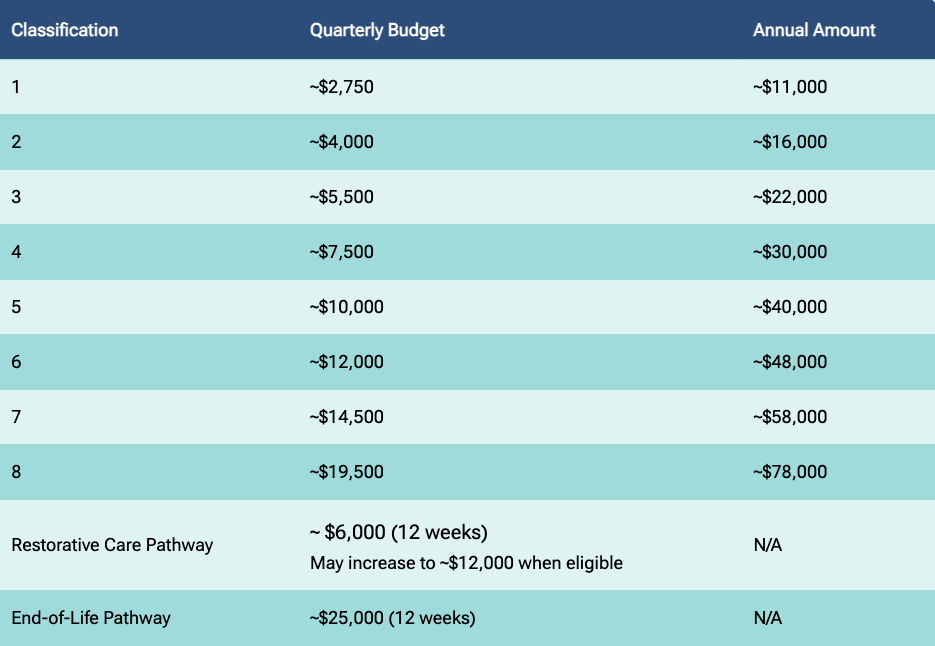Support at Home - key information for care recipients
13 Nov 2024

The Department of Health and Aged Care has released new details about the upcoming Support at Home program. Trilogy Care has reviewed the updates and summarised the key changes for you below. It is important to note that these changes are subject to the passage of the new Aged Care Act through Parliament.
New pathways for support
One significant change in the Support at Home program is the increase in classification levels for care recipients. The existing four levels under the Home Care Package system will expand to eight levels, plus two short-term pathways: Restorative Care and End-of-Life Pathways.
These short-term pathways are designed for those who need additional support to remain at home. The Restorative Care Pathway offers up to 12 weeks of support, while the End-of-Life Pathway is available for individuals with three months or less to live.
The eight classification levels of Support at Home
Below are the funding amounts for the eight levels of Support at Home, along with the short-term pathways:
Details on the Restorative Care Pathway
The Restorative Care Pathway provides up to 12 weeks of additional support to help maintain and improve independence, offering:
Up to 12 weeks of restorative services
Additional services alongside existing Support at Home services
An extra budget of ~$6,000 (or up to $12,000 if required) for allied health services
Details on the End-of-Life Pathway
The End-of-Life Pathway allows recipients to receive higher levels of in-home care during their final months, providing:
Up to 12 weeks of support with a funding cap of $25,000
Access to enhanced care services to support comfort and dignity
What will change for Home Care Package care recipients?
The key differences for those transitioning from Home Care Packages to Support at Home include:
Quarterly budgets
Adjustments to care management funding
The Assistive Technology and Home Modifications (AT-HM) Scheme
Government-set price caps
Transparent pricing inclusive of administration fees
The “No Worse Off Principle” ensures that current Home Care Package recipients will maintain their level of funding and support under Support at Home.
Changes to Unspent Funds
Unlike the current system, the Support at Home program features quarterly budgets, providing greater flexibility. Unspent funds can be carried over to the next quarter, up to a maximum of $1,000 or 10% of the budget.
Any funds accrued under the Home Care Package Program will be retained upon transitioning to Support at Home, and are not subject to quarterly rollover limits.
Quarterly Timeframes:
July to September
October to December
January to March
April to June
Is re-assessment required?
No re-assessment is needed for current Home Care Package recipients or those on the National Priority System; all will transition to Support at Home from 1 November 2025.
Is there additional support for people from diverse backgrounds?
Care recipients from culturally and linguistically diverse backgrounds may qualify for additional care management supplements. Providers can also apply for a 2-year thin market grant to support care in rural or remote areas and for diverse populations.
Additional funding can be providing for:
Individuals referred by the care finder program
Older Aboriginal and Torres Strait Islander people
Those at risk of homelessness
Care leavers (people separated from family by forced adoption)
Veterans approved for the Veteran’s Supplement
Is respite included in Support at Home?
The Support at Home program does not include temporary leave provisions like respite care.
What are the annual caps for gardening and cleaning?
The initial annual caps proposed by the government have been removed and are no longer a part of the Support at Home program.
Trilogy Care will look after you
Trilogy Care is committed to making your transition to the Support at Home system as smooth as possible. We aim to provide high-quality care and support, enabling you to continue benefiting from self-management.
We will keep you updated as more information becomes available. If you have any concerns, please reach out to your care partner or contact us via our website.

